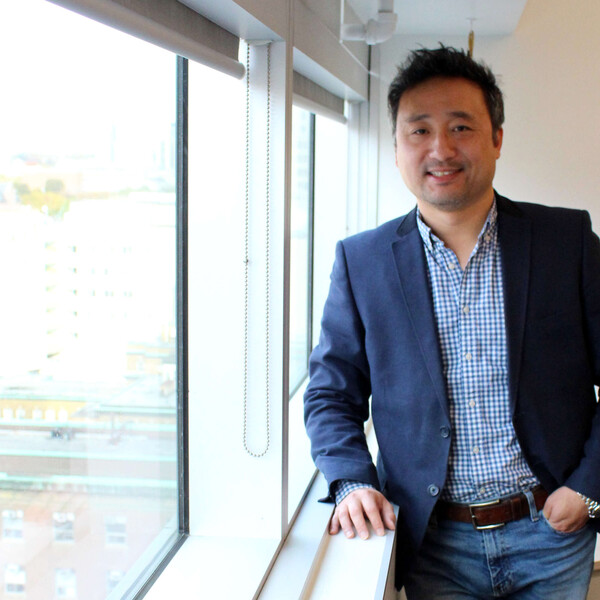Tony Lam
PhD

Research Synopsis
Research Divisions: Endocrine and Diabetes Platform
Keywords: Nutrient sensing / Hormonal action / Diabetes / Obesity.
Research Interests:
The Lam lab consists of post-doctoral fellows, graduate students, research associates and technicians, and together, they aim to unveil novel therapeutic molecular targets in the gut and the brain that lower blood glucose and lipid levels as well as body weight in diabetes and obesity.
The Lam lab seeks hard-working and energetic individuals to join the group to continue seeking novel and effective antidiabetic and antiobesity molecules to help impact health care in Canada and around the world.
Funded by a CIHR Foundation Grant, the Lam lab discovered that there are nutrient sensing-dependent molecules in the gut that are sufficient and necessary for gut microbiota, metformin and bariatric surgery to lower blood glucose levels in diabetic and obese rodents (Bauer et al. Cell Metab 2017; Duca et al. Nat Med 2015; Cote et al. Nat Med 2015; Rasmussen et al. Cell Metab 2014; Breen et al. Nat Med 2012; Cheung et al. Cell Metab 2009; Wang et al. Nature 2008). In parallel, the Lam lab examines nutrient sensing-dependent molecules in the brain that lower blood glucose and lipid levels as well as body weight in diabetic and obese rodents (Yue et al. Nat Commun 2016; Yue et al. Nat Commun 2015; Yue et al. Circ Res 2012).
The Lam lab also studies hormone sensing dependent molecules in the brain that lower blood glucose and lipid levels as well as body weight in diabetic and obese rodents (Filippi et al. Cell Rep 2017; LaPierre et al. EMBO Rep 2015; Mighiu et al. Nat Med 2013; Filippi et al. Cell Metab 2012).
Recent Publications
Duca FA et al. Glucoregulatory relevance of small intestinal nutrient sensing in physiology, bariatric surgery, and pharmacology. Cell Metab 2015 July 22.
Duca FA et al. Metformin activates a duodenal Ampk-dependent pathway to lower hepatic glucose production in rats. Nature Medicine 21(5):506-11, 2015 (Highlighted in the Cover).
Cote CD et al. Resveratrol activates duodenal Sirt1 to reverse insulin resistance in rats through a neuronal network. Nature Medicine 21(5):498-505, 2015 (Highlighted in the Cover).
Yue JT et al. A fatty acid-dependent hypothalamic-DVC neurocircuitry that regulates hepatic secretion of triglyceride-rich lipoproteins. Nature Commun 2015 Jan 12;6:5970.
Rasmussen BA et al. Jejunal leptin-PI3K signaling lowers glucose production. Cell Metabolism 19(1):155-161, 2014
Mighiu PI, Yue JT et al. Hypothalamic glucagon signaling inhibits hepatic glucose production. Nature Medicine 19(6):766-772, 2013
Filippi BM et al. Insulin activates Erk1/2 signaling in the dorsal vagal complex to inhibit glucose production. Cell Metabolism 16:500-510, 2012
Breen DM et al. Jejunal nutrient sensing is required for duodenal-jejunal bypass surgery to rapidly lower glucose concentrations in uncontrolled diabetes. Nature Medicine 18:950-955, 2012. (Live Interview at Nature Medicine Podcast: Time 16:06)
Yue JT and Lam TKT. Lipid sensing and insulin resistance in the brain. Cell Metabolism 15:646-655, 2012
Yue JT et al. Glycine normalizes hepatic triglyeride-rich VLDL secretion by triggering the CNS in high-fat fed rats. Circ Res 110:1345-54, 2012
Lam TKT: Neuronal regulation of homeostasis by nutrient sensing. Nature Medicine 16:392-395, 2010.
Cheung G et al. Intestinal cholecystokinin controls glucose production through a neuronal network. Cell Metabolism 10:99-109, 2009 (Cover story, (TV Interview).
Wang P et al. Upper intestinal lipids trigger a gut-brain-liver axis to regulate glucose production. Nature 452:1012-1016, 2008 (Named a 2008 Milestone in Canadian Health Research by Canadian Institutes of Health Research).
Caspi L et al. A balance of lipid-sensing mechanisms in the brain and liver. Cell Metabolism 6:99-104, 2007
Lam TKT et al. Regulation of blood glucose by hypothalamic pyruvate metabolism. Science 309(5736):943, 2005.
Appointments
Medicine, John Kitson McIvor Endowed Chair in Diabetes Research, Canada Research Chair in Obesity
